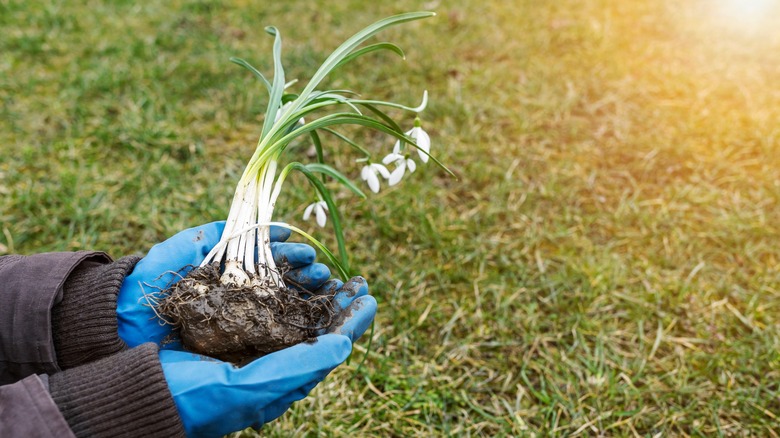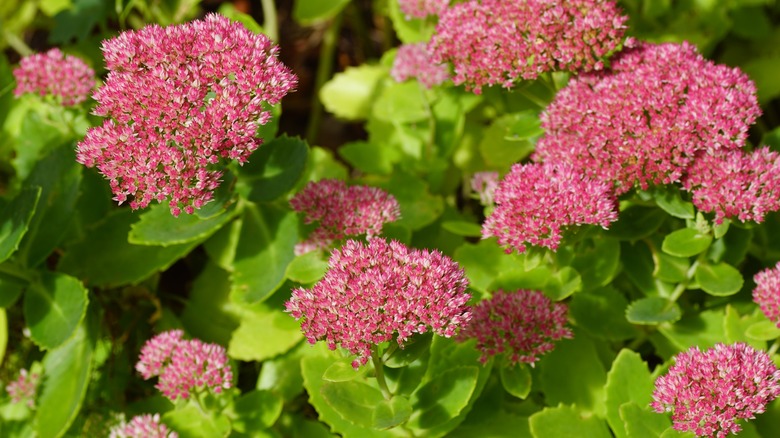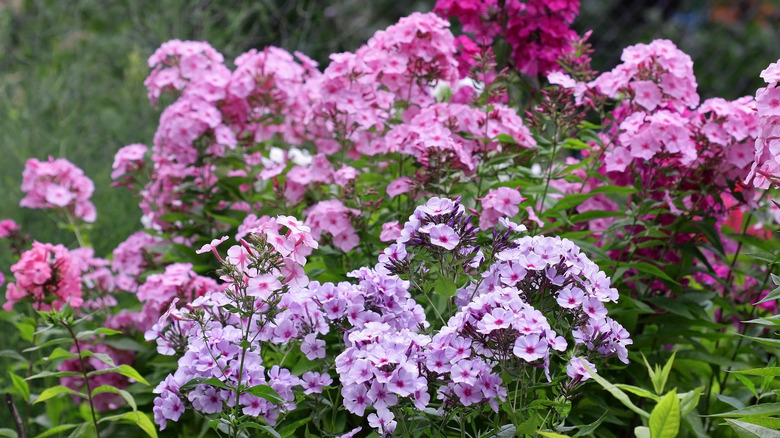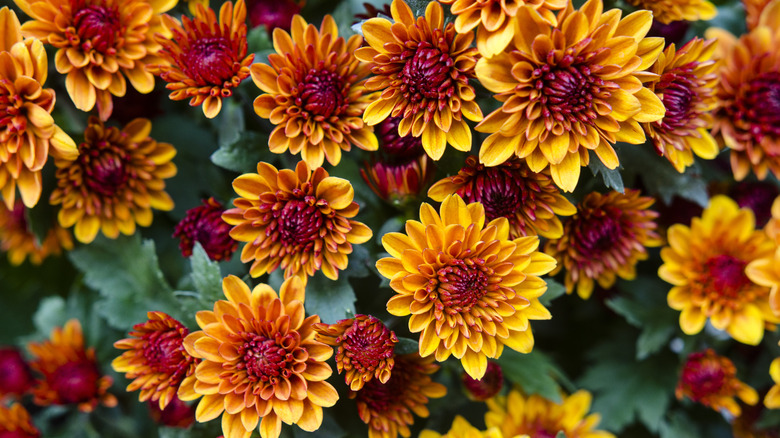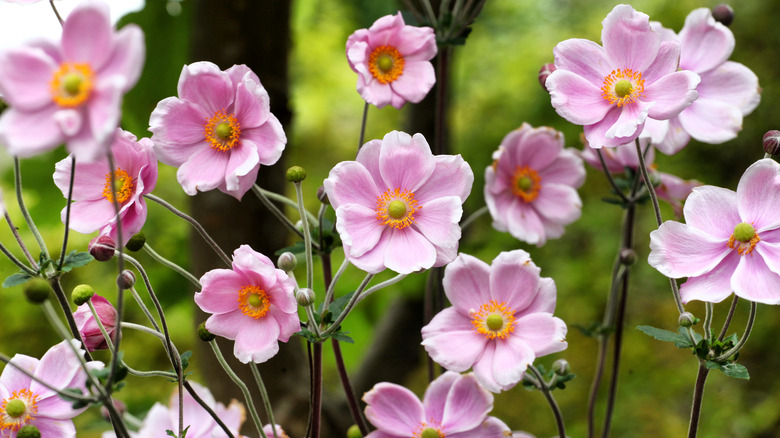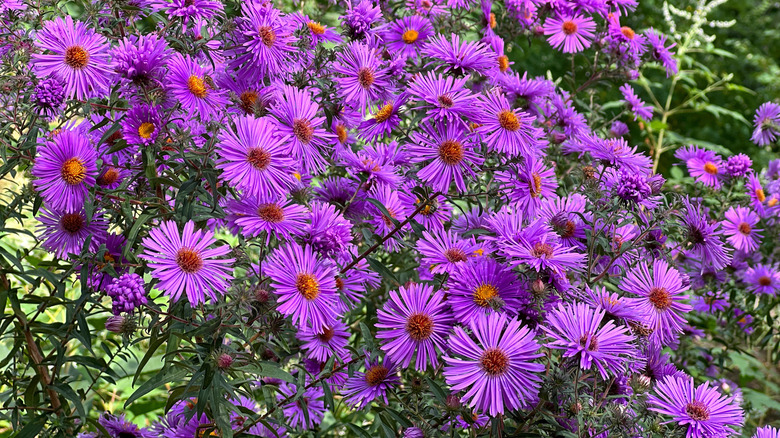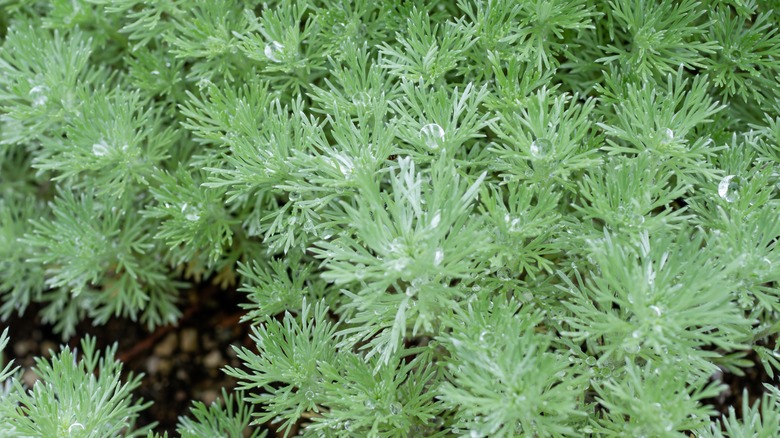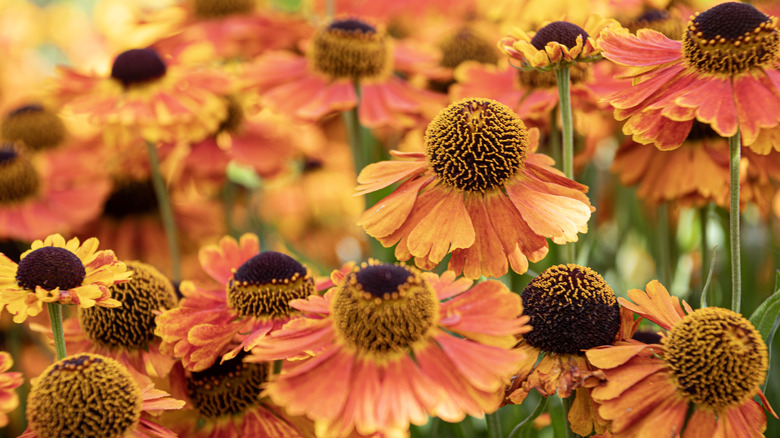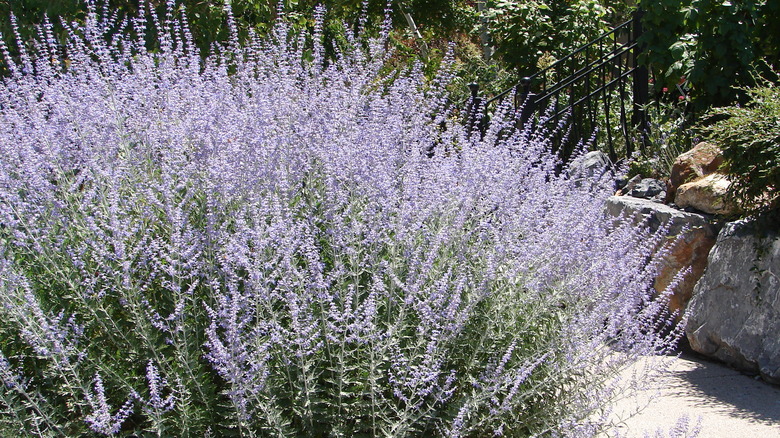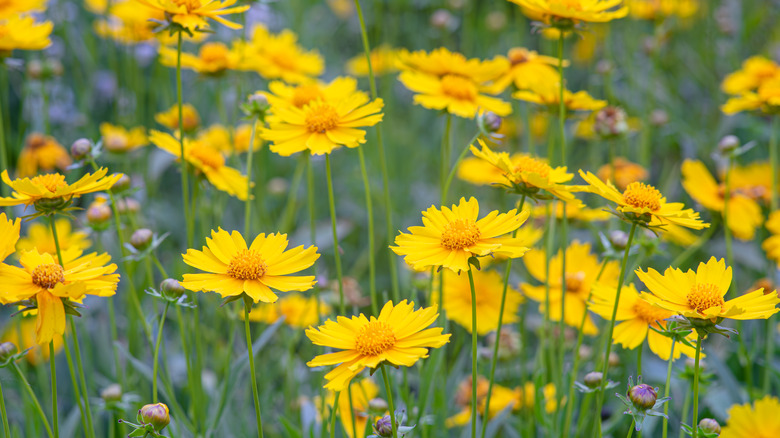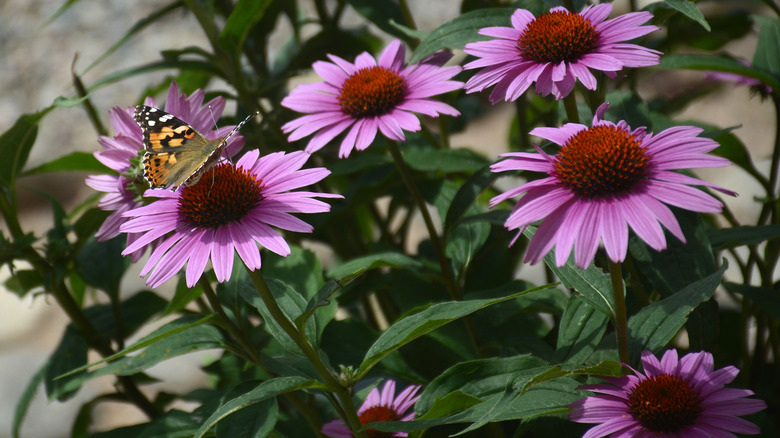The 10 Best Plants To Pass Along To Beginner Gardeners After Dividing Them In Spring
Dividing perennials is a central task for many gardeners. Some plants should get divided in spring, while autumn is best for others. But what to do with the divisions? If you have space, you can plant them throughout your garden. Or, if you're low on space and don't need more of certain perennials, why not share the wealth? Gardeners often trade divisions with each other or hold plant swaps, both of which are great ways to take your garden from drab to fab on a budget. Further, giving divisions to beginning gardeners is a wonderful way to help them start their first garden, and there are many easy-care perennials that you can pass along to beginners after you divide them in the spring.
The basic rule for when to divide perennials is linked to their bloom time and growing cycle. Early-blooming perennials should be divided in autumn, when their growth cycle begins to go dormant. Late-blooming perennials emerge slowly in spring, so they should be divided before they enter the more active phase of their growth in summer. Though it's not always possible to divide perennials at the "right" time, they're more likely to thrive if you observe this rule.
The late season bloomers included here are sturdy, easy-to-maintain perennials. These plants should perk right up once they're replanted after spring division. You can also give the recipient some growing tips and urge them to do a bit of research on needs like soil conditions, water amounts, and deadheading.
1. Sedum
Sedums, also known as stonecrops, are attractive, drought-tolerant plants that have a long growth cycle. They emerge in early spring as tiny rosettes. These get bigger and start to form fleshy leaves on stems. There are tall varieties as well as creeping or trailing ones, most with colorful flowers. Because sedums are so sturdy, they can be divided in spring and not miss any growth. In fact, if you accidentally left little pieces of the roots out over the winter, you may find them sprouting in the spring. They need plentiful sun but are otherwise easy to grow, so they're great to give to beginner gardeners.
2. Tall phlox
There are a few kinds of phlox, all of which can be divided in spring, but woodland phlox (Phlox divaricata) blooms fairly early, so it's better to divide in the fall. On the other hand, creeping phlox (Phlox subulata) can be divided in spring, as well as Tall phlox (Phlox paniculata), which is also known as garden phlox. They bloom in partial shade to full sun and flower for weeks in the summer. These plants need space for good air circulation and to prevent powdery mildew, but otherwise phlox flowers are easy-care perennials.
3. Mum
Chrysanthemums, commonly called mums, are cold-hardy perennials that light up the late season garden with color. Mums are often sold as potted plants to use as decor. Many people simply discard them at the end of the autumn season, but they are wonderful garden perennials when they're planted in the ground. They perform best if planted from bare root divisions in spring and should be "pinched back" every two weeks until early July to encourage more buds. Mums have somewhat woody stems once established, and you can gently pull these apart or cut them to pass along divisions in the spring.
4. Japanese anemone
Japanese anemones (Anemone hupehensis) are a glorious sight in the autumn garden with their graceful tall stems and enchanting pink flowers. They like to spread a bit, and the leafy clumps emerge in spring: a perfect time to gently dig out any extras and pass them along to a beginning gardener. These hardy flowers thrive in a rich, fertile soil that stays fairly-moist but not soggy. They bloom well in partial shade to partial sun. Too much direct sunlight might make them droop, so a location that gets morning sun in summer is better than one that gets sun in the afternoon.
5. New England aster
New England asters (Symphyotrichum novae-angliae) are wonderful easy-care perennials that provide abundant late season color, attracting beneficial pollinators to the autumn garden. They emerge in spring with small leaves, and the gently-spreading roots can be divided and replanted easily. The blooms prefer full sun and come in many beautiful varieties in a range of heights and colors including white, pink, purple, and blue. Because asters are easy to grow and take care of, they're perfect for those who don't have much experience with gardening.
6. Artemisia
Artemisia, also known as mugwort or wormwood, comprises a large number of plants. This aromatic herb can send wasps buzzing away from your yard and has pale, silvery-green leaves. Its height, shape, and leaf textures vary depending on the variety, and some grow in clumps while others spread via their root systems. Silver Mound artemisia has very fluffy, feathery leaves, and the plant grows in a rounded clump that performs best if divided every year, so it's a good one to divide and share in the spring. All artemisias like full sun and sandy, loamy soil.
7. Helenium
Helenium, aka sneezeweed, is a tall, late summer blooming perennial with daisy-like flowers in shades of red, yellow, and orange. It attracts pollinators, especially butterflies. Helenium performs best in full sun, and its height makes it perfect for the back of a border. It prefers slightly-acidic soil that is consistently-moist. The root clumps are sturdy, and the best way to divide them is to dig up the entire clump, cut the roots with a spade or garden knife, then replant the clump — or pass it along. While gorgeous, this plant does have some major downsides including that it's toxic when ingested, so exercise caution around children and pets.
8. Russian sage
Russian sage (Perovskia atriplicifolia) is a large perennial that grows long spikes of aromatic pale purple flowers in late summer. It performs best in bright sun and sandy soil, is very drought tolerant, and has nectar-rich flowers that attract many bees. Bonus: the strong fragrance and fuzzy bracts deter bothersome insect pests. The plant can be a bit unruly when it gets bigger, so be sure to cut it all the way back during autumn clean up and divide every other year to keep it looking neat. You can divide it in spring as soon as new green growth appears, then pass along the divisions to other gardeners.
9. Coreopsis
Coreopsis, or tickseed, is a sun-loving, pollinator-friendly flower. It's a perennial that blooms with bright yellow flowers or pink ones. The plant has two basic forms: clumping and spreading. The clumps have rounded leaves and spread by seeding throughout the garden. The spreading form, also known as lance leaf coreopsis, spreads via thin yellow roots. Lance leaf coreopsis is easily divided in spring when it puts up shoots that look like tiny conifers. Spread the love to your fellow gardeners by giving them some of your divisions.
10. Coneflower
Coneflower (Echinacea) is a sturdy, easy-care perennial with long-lasting blooms that attract many pollinators in summer. The seeds also provide tasty snacks for songbirds in autumn. It prefers full sun with well-draining soil and doesn't like constant moisture. Heirloom varieties come in rose pink or greenish-white, but there are many hybrid varieties now available in vivid colors and interesting textures like double flowers, pom-pom centers, and fluffy petals. Just like the other perennials on this list, coneflower is easy to grow and care for, so it's great for those who are just starting their gardening journey.
